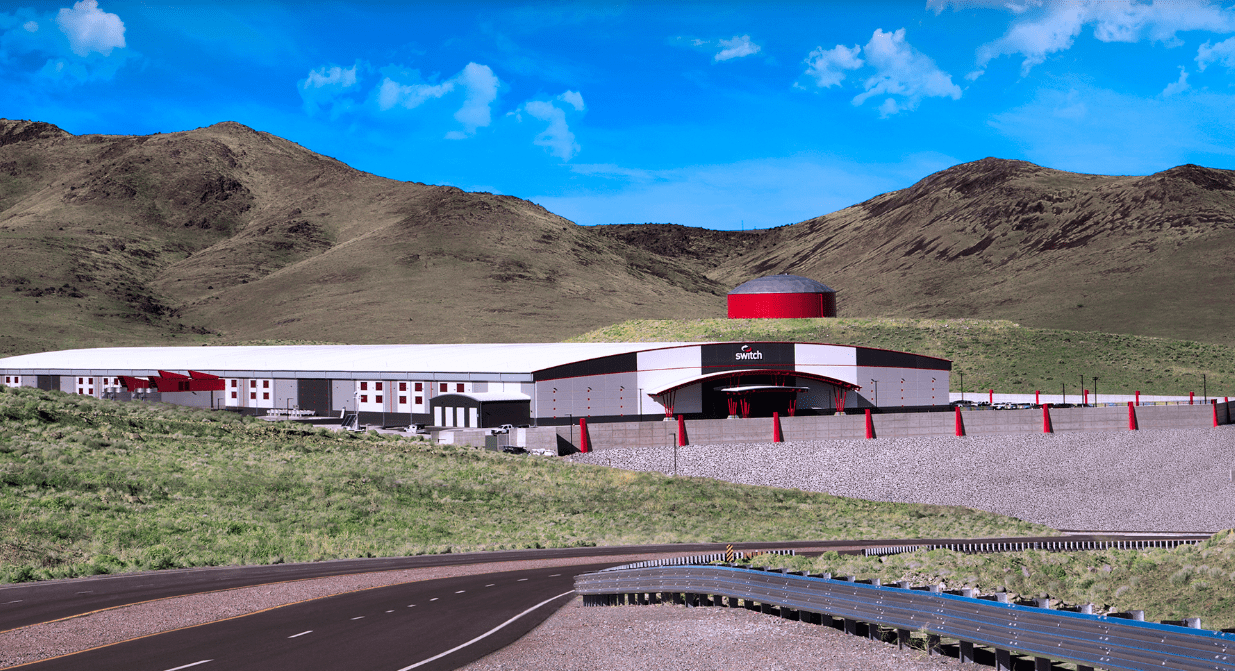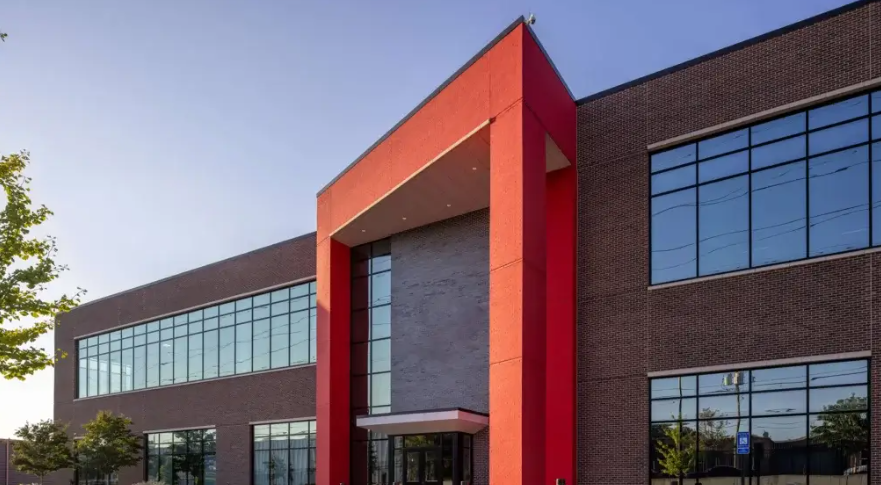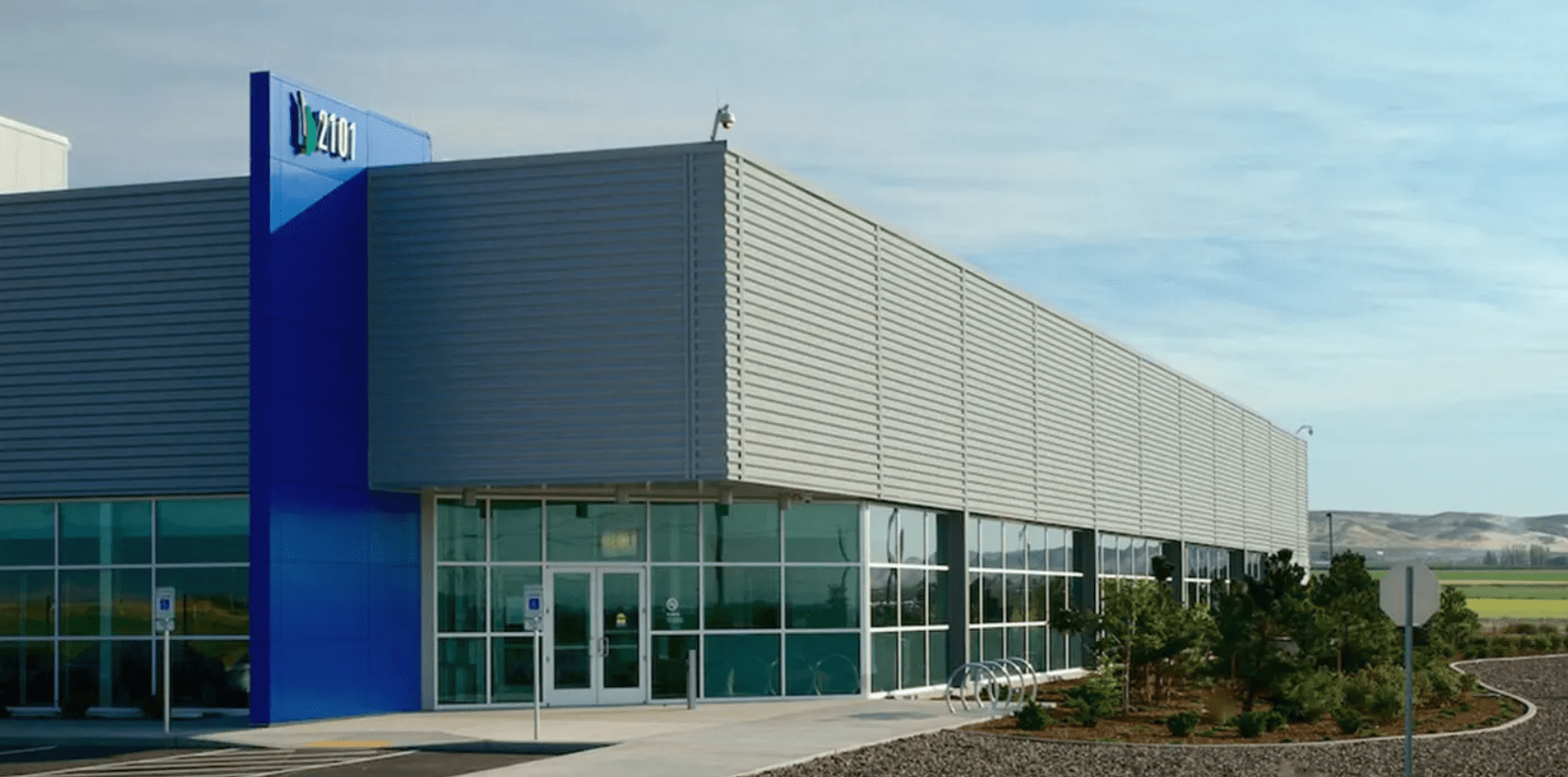Table of Contents
The United States continues to lead the global data centers market with more than 5,427 operational data centers. Large data centers like Meta's Altoona Data Center in Iowa, Switch's Citadel Campus in Nevada, which is the world's largest colocation facility, and Microsoft's Quincy Data Center in Washington are a few of the operational data centers that continue to meet the country's expanding need for computing, storage, and connection.
While cities like Dallas and Los Angeles are two important cities with 156 and 151 operational data centers. In this blog, we have listed the top 10 largest data centers in the US by IT load. Keep reading to know more.
Top Data Centers In The US (2025)
Project Name | Developed By / Operator | Location | Capacity (IT Load, MW) |
Meta’s Altoona Data Center | Meta | Altoona, Iowa | 1,401 MW |
Meta’s Prineville Data Center | Meta | Prineville, Oregon | 1,289 MW |
Meta’s Fort Worth Data Center | Meta | Fort Worth, Texas | 729 MW |
Switch TAHOE RENO 1 | Switch | Tahoe Reno, Nevada | 650 MW |
Switch Core Campus | Switch | Las Vegas, Nevada | 495 MW |
Microsoft Quincy Data Center | Microsoft | Quincy, Washington | 622 MW |
QTS Atlanta 1 | QTS Realty Trust | Atlanta, Georgia | 278 MW |
Lakeside Technology Center | Digital Realty | Chicago, Illinois | 100+ MW |
Vantage Quincy Campus | Vantage Data Centers | Quincy, Washington | 89 MW |
Apple Mesa Data Center | Apple | Mesa, Arizona | 50 MW |
*The projects are ranked based on IT load capacity, which may vary over time.
Meta’s Altoona Data Center
The Altoona Data Center, located in Altoona, is one of Meta's largest operational facilities in the United States. The estimated IT load of the facility is approximately. 1,401 MW. The data center broke ground in 2013. The and is planned to exceed 5 million square feet with a total investment of USD 2.5 billion.
While Meta is the owner and operator, Turner Construction Company is the general contractor of this facility. The site is a pilot for electric and hybrid construction equipment. It consists of two buildings, 1 and 2 of the Polk County Data Center. It was the first of the eight data center halls for the new campus in central Iowa. The facility is a two-story "H" structure. The facility supports over 400 operational jobs and is powered entirely by renewable energy.
Meta's Prineville Data Center
The Prineville data center is located on the Oregon campus. It was one of Meta’s first wholly owned data centers in the U.S. The Prineville, Oregon, data center capacity is 1,289 MW. DPR Construction was selected as the general contractor for this facility. The entire campus was constructed to LEED®-NC Gold standards and was among the first data centers to achieve that level of green certification.
The Prineville campus has one of the lowest PUE (Power Usage Effectiveness) ratings in the industry at the time, measured at approximately 1.06. The project also served as the physical foundation for Meta’s launch of the Open Compute Project, which made the building and server designs publicly available to drive broader industry innovation.
The initial project scope included two 300,000-sq.-ft. data halls and a 70,000-sq.-ft. administrative building, all constructed from the ground up. It was built with an investment cost of USD 2 billion. The project broke ground in 2010, and DPR worked closely with Meta’s design and engineering teams to optimize the facility’s performance for the region’s high-desert climate, incorporating an airside economizer system that uses 100% ambient air and a highly efficient evaporative cooling system.
Meta’s Fort Worth Data Center
Meta’s Fort Worth, Texas data center campus carries an estimated IT load of 729 MW and spans around 2.5 million square feet. The investment cost of the project is USD 1.5 billion and was built in multiple phases, with the first phase operational in 2017. The data halls and administrative spaces came online gradually. The full campus became operational by 2023.
The Fort Worth, Texas, Meta facility operates entirely on 100% clean and renewable energy, contributing to the development of nearly 1,919 MW of new renewable energy in Texas. The Fort Worth Data Center delivered critical capacity to support platforms like Facebook, Instagram, and WhatsApp, empowering more than 3 billion users worldwide.
Switch TAHOE RENO 1 Data Center

The Switch TAHOE RENO colocation facility is the world's largest colocation facility located in the Tahoe Reno Industrial Center in Northern Nevada. It is part of the massive Citadel Campus developed by Switch, designed for up to 7.2 million square feet and up to 650 MW of power capacity.
The Citadel Campus covers 2,000 acres and is designed to ultimately offer 7.2 million square feet of data center space. It is designed with a tri-redundant UPS system and Switch SHIELD roofing system that can withstand 200 mph winds. Its high-capacity racks deliver up to 42 kW per cabinet. It is connected to the Switch SUPERLOOP, a 500-mile multi-terabit fiber network linking Tahoe Reno to San Francisco, Los Angeles, and Las Vegas data centers.
Core Campus (Las Vegas, Nevada)
-min.png)
Switch’s Core Campus is located in Las Vegas. It totals more than 2.4 million sq ft, with operational capacity exceeding 495 MW IT load. The Core Campus hosts extensive colocation and enterprise workloads, uses high-efficiency cooling and power infrastructure, and is constructed to Tier IV Gold standards for uptime and reliability.
The site is entirely powered by renewable energy and frequently ranks as one of the world’s most advanced and secure facilities. Switch’s ecosystems in Nevada feature interconnected fiber access, rapid scalability, and the pioneering “Switch SHIELD” security architecture.
Microsoft Quincy Data Center
The Microsoft Quincy Data Center is one of the largest and most advanced data center campuses in the United States, located in Washington state. This 622 MW campus spans about 270 acres and includes generations two, three, and four with a fifth-generation center under development.
The power source of the campus is from the nearby Grand Coulee hydroelectric station through dedicated power lines. This campus has a Power Usage Effectiveness (PUE) as low as 1.4. The first data halls on the campus used 2.5 MW of power across 18 rows of IT equipment. Microsoft's Quincy data center is equipped with both new-age and traditional cooling systems.
The campus includes containerized data center racks by multiple vendors supporting 30 trillion stored data objects, and over 1.5 million network requests per second.
QTS Atlanta 1

QTS Atlanta 1 (QTS Atlanta-Metro Data Center) is one of the largest enterprise-grade data centers in the southeastern US, spanning 970,000 sq ft located in Atlanta, Georgia. This 278 MW QTS data center features a dedicated on-site Georgia Power substation and direct access to major fibre and carrier networks for low-latency and high-throughput workloads. It has a PUE of 1.20. It has four sublocations named DC1, DC2, DC3, and DC4.
The campus is LEED Gold certified and offers robust growth potential—including newly acquired land for added megawatt capacity and multiple expandable buildings on Jefferson and Herndon streets.
Lakeside Technology Center (Chicago, Illinois) – Digital Realty
Lakeside Technology Center, located at 350 East Cermak Road, Chicago, stands as one of the largest carrier hotels and multi-tenant data centers in the US. It is operated by Digital Realty and is spread across 1.1 million sq ft and provides more than 100 MW of IT power for wholesale colocation, cloud, and telecom clients.
The site is for its central Midwest network connectivity and infrastructure, including redundant chillers, generators, and deep-flood resilience engineering. Lakeside Technology Center plays a critical role as a network hub for financial exchanges, hyperscale cloud deployments, and telecom interconnects.
Vantage's Quincy Data Center Campus

Quincy Data Center Campus is an 89 MW data center located in Quincy, Washington. It is spread across 775,000 square feet. The power is provided by Grant County Power Utility District, offering some of the lowest per-kilowatt rates in the US.
The Quincy data center campus features electrical design & power infrastructure that supports multiple cooling systems, ensuring efficient data module cooling and humidity management.
Cooling systems include computer room air handling units (CRAH) on opposite sides of data modules, a closed-loop chilled water system with air-side economizers, and N+1 redundancy for mechanical systems. Water Utilization Efficiency (WUE) is near zero with the latest cooling design for planned new buildings. It is LEED Gold certified by the U.S. Green Building Council.
Power generation includes hydroelectric sources, in which Grant County produces over 66% of energy through hydroelectric technology. The Generators used meet EPA Tier II standards and reduce emissions by 90%.
Apple Mesa Data Center
The Apple Mesa Data Center is a hyperscale facility serving as Apple’s global data command center, controlling services like iMessage, Siri, iCloud, and Apple Music. Occupying approximately 1.3 million sq ft, it is one of the largest data centers in the world. Apple invested over USD 2 billion in the site’s sustainability, converting the former sapphire plant into a leading-edge data infrastructure hub.
Conclusion
The United States continues to remain the global leader in digital infrastructure and the data center industry, supported by major data center operators, companies and tech firms such as Digital Realty, Iron Mountain Data Centers, Vantage Data Centers, QTS Data Centers, American Tower, Microsoft Azure, Google Cloud, Amazon Web Services, and Meta Platforms.
Leading data center locations such as Northern Virginia’s Data Center Alley, Silicon Valley, New York City, Washington DC, Fort Worth, Virginia Beach, Salt Lake City, Kansas City, and the Bay Area reinforce the nation’s position as the largest data center market in North America and the wider global data center capital.
With already operational projects like Meta’s Altoona Data Center and Switch’s Citadel Campus, along with upcoming developments such as the Munich Data Center Redevelopment and VIRTUS’s Wustermark Campus, new data center developments are expanding capacity, power infrastructure, space, high reliability and network connectivity to meet the growing demand for cloud services, cloud computing, AI data centers, data storage, and high-reliability data center operations.
Spot High-Value Data Center Projects & Capitalize on Emerging Opportunities
Unlock United States Data Center Opportunities! Introducing Blackridge Research's Global Project Tracking (GPT) platform:
Instant access to India's latest Data Center Facility Projects
Comprehensive insights from planning to completion
Essential details: scope, CapEx, timelines, and key contacts
User-friendly interface for quick opportunity identification
Want more data center construction insights, including planned projects, active companies, and key decision-makers? Get started with our project tracker demo today.






Leave a Comment
We love hearing from our readers and value your feedback. If you have any questions or comments about our content, feel free to leave a comment below.
We read every comment and do our best to respond to them all.